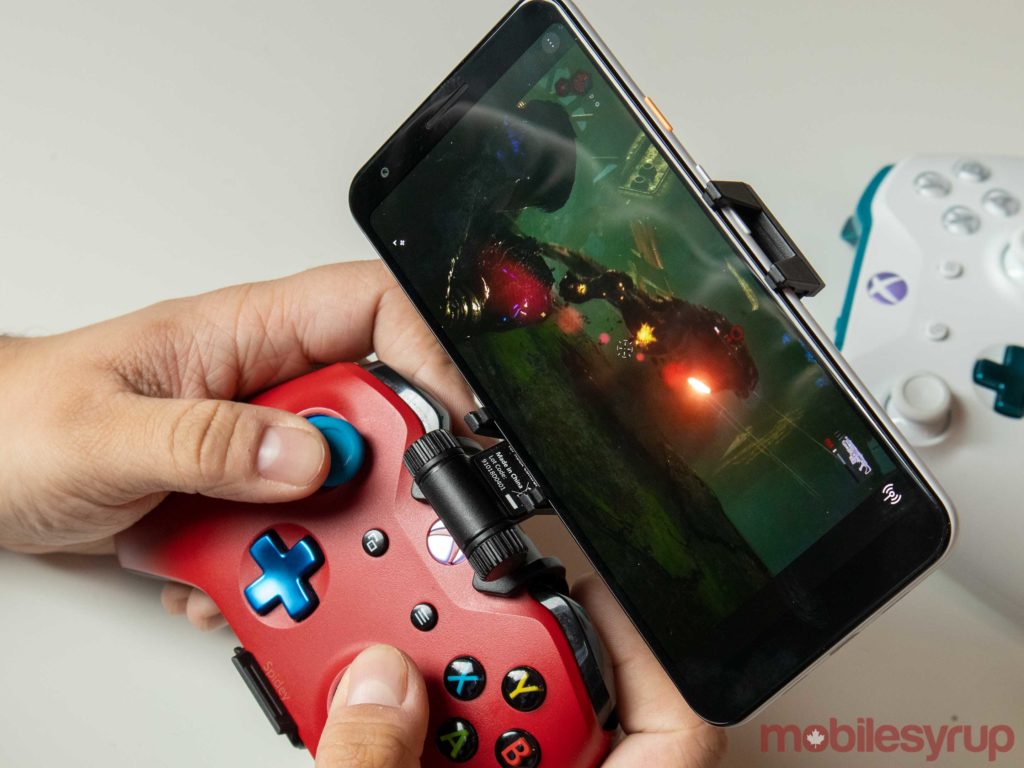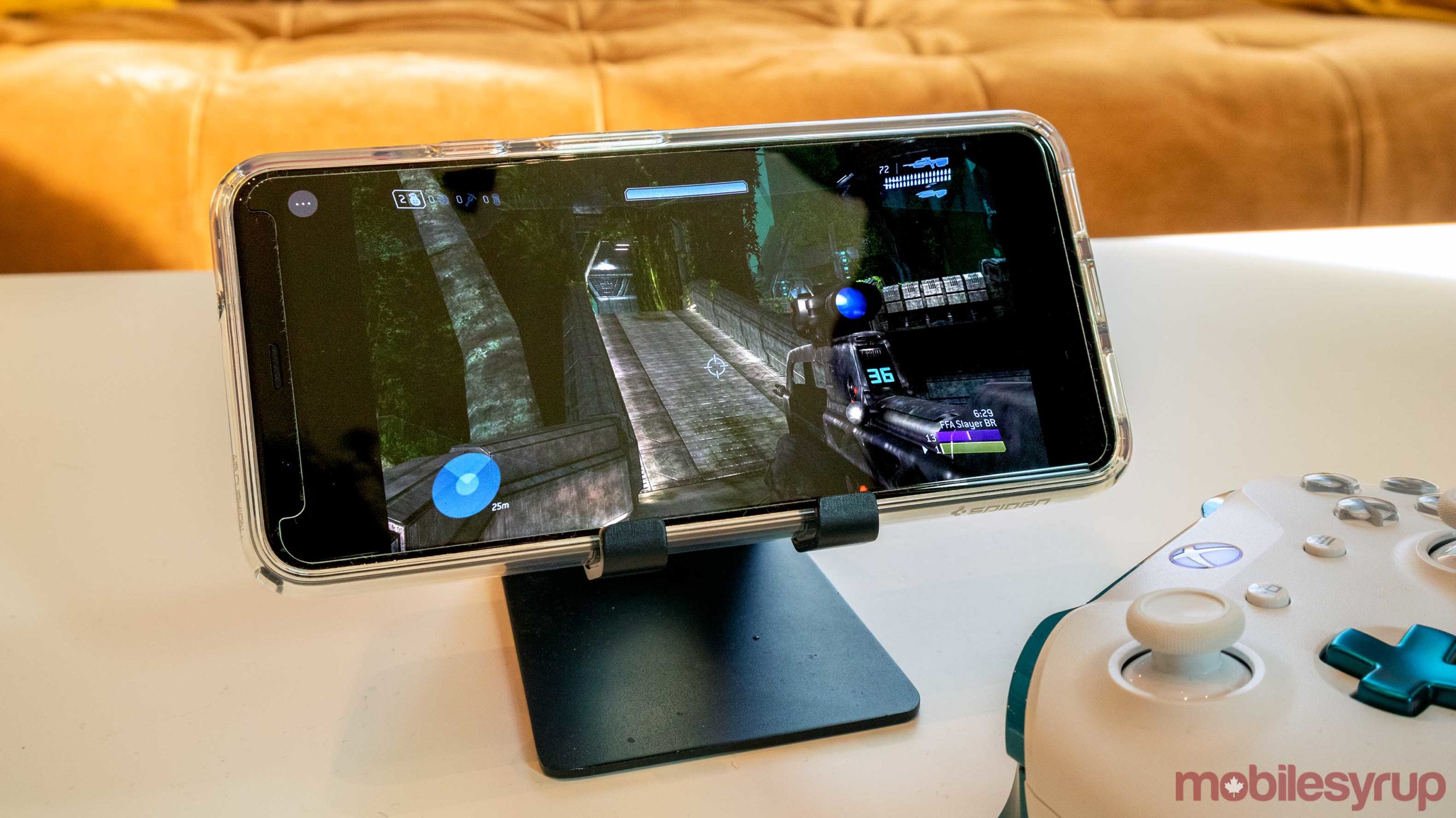
You might not know it, but there are roughly two billion people who play games around the world. With the global population nearing eight billion, that means that about one in four people are gamers — many of whom are playing on their phone or tablet.
This large, far-reaching audience is precisely who the Redmond, Washington-based tech giant is targeting with its ambitious Project xCloud game streaming initiative. Powering this service is Microsoft’s extensive lineup of Azure cloud servers operating in 140 countries spanning 55 regions around the world.
While xCloud is still only in free public preview, Microsoft has just opened up testing to Canada, following months of trials in the U.S., U.K. and South Korea.
To discuss xCloud’s expansion into Canada and Microsoft’s broader vision for game streaming, MobileSyrup interviewed two driving forces behind the service: xCloud corporate vice president Kareem Choudhry, and xCloud general manager and head of product Catherine Gluckstein.
Here’s what they had to say:
Question: Game streaming technology is mostly still in its infancy. Why do you think now is the right time to introduce Project xCloud?
Choudhry: I think it’s a bunch of things. One is the consumer expectation. As I think about my own personal consumption of music, and you probably relate to this, I love having the choice of playing in on a variety of devices. I, personally, as a gamer, want that same choice when it comes to gaming.
In terms of the technology side and readiness side, with the work that Microsoft has done with the Azure build-out, with the technology that we’ve able been able to develop with Xbox One from a platform perspective, and really just listening to what players are asking for — all of those things are really all coming together to make this the right time for us.
And the other thing I’ll talk about is the worldwide rollout of 5G. Now, to be very clear, our service does not require 5G. We’re having customers have a great experience on 4G, LTE and Wi-Fi. But what 5G is predicted to do is dramatically lower the cost of internet access, and, perhaps, better serve markets and regions that are particularly underserved today. And then just from a follow-the-trend perspective, there are many who say that 3G became successful on the back of streaming music, 4G became successful on the back of streaming video, and there are many who believe that 5G will become successful on the back of streaming games.
Q: For now, xCloud only supports Android phones and tablets. What was the rationale to initially only support Android mobile devices? What’s the roadmap to expand support to iOS and other platforms?
Gluckstein: We’ve staggered the approach because we think it’s important to prepare to get this right, rather than to move fast. That’s not say that we’re not moving extremely fast. [laughs] But it’s just to get this right. So we’re focusing and taking a very measured approach of how we roll out across content, customers, country and endpoint. But we absolutely believe that our end goal is for customers to be able to play wherever they choose and whenever they want.
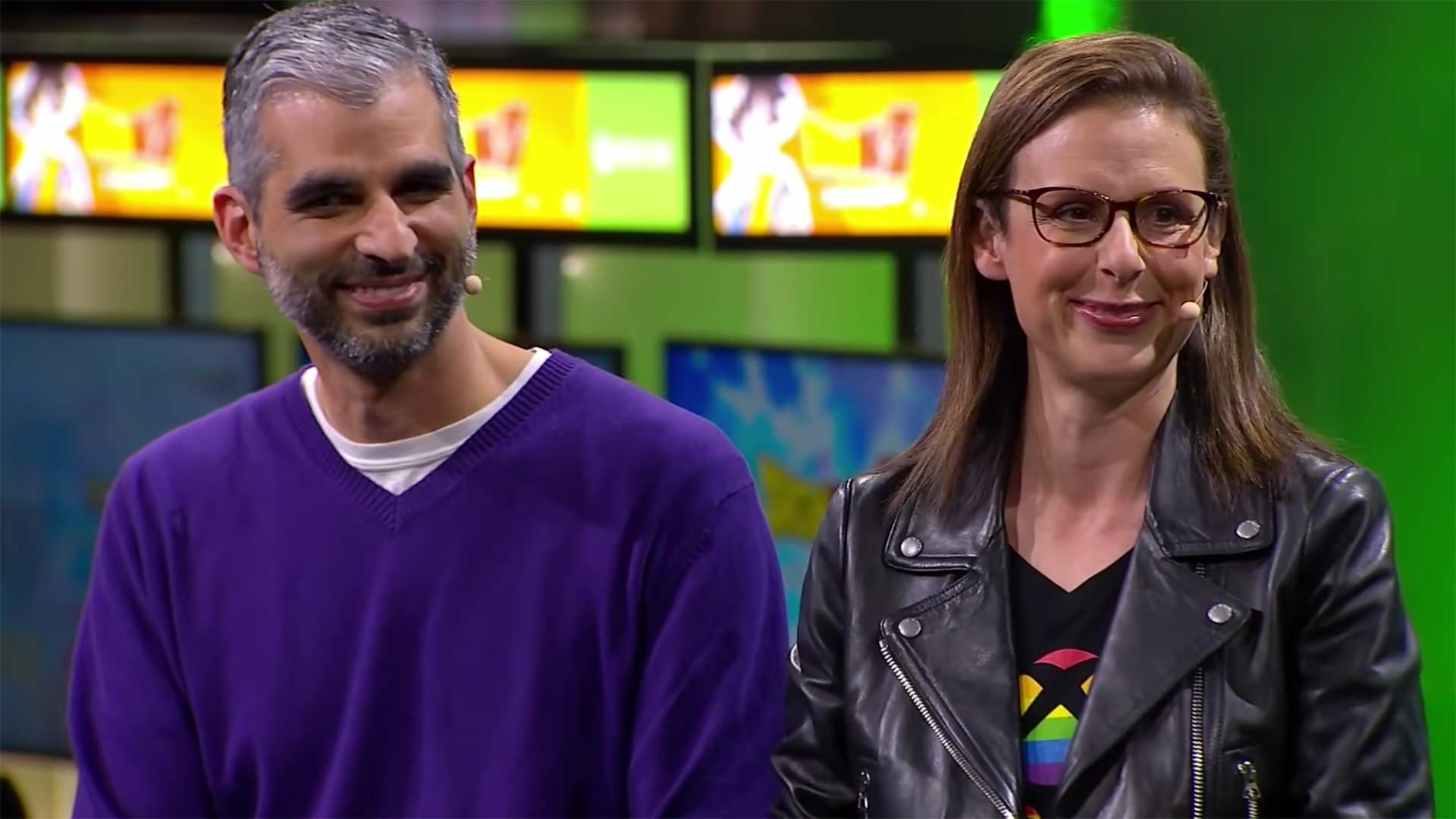
Choudhry: As for starting on Android, [there were] a couple of specific motivations for that. One, Android just has a huge install base, and we wanted to enable our existing gamers and the gamers of the world to do something with Project xCloud that they can’t do today. It’s important to us as creators and innovators to bring some completely new capability into the space, and that’s informing our roadmap as well.
Q: [Rival game streaming service] Google Stadia has been emphasizing many of the specs associated with streaming, like 4K/60fps/HDR. But with xCloud, the focus seems to be more on games. Was this a deliberate choice and how does this inform your focus with the service going forward?
Choudhry: As a company, we’re in gaming for gaming’s sake. We love the craft. We love the industry. We care about the vivid characters, the epic stories, the beautiful landscapes. So everything that we do starts with a content-led experience. At the same time, we’ve been in gaming for a long time, so when we think about the highest possible fidelity experience, we have Xbox One S market, we have Xbox One X market and we support PC gaming. For consumers who want that ultimate experience, our belief is that in the near term, that’s going to be through native local play.
But [xCloud] is for anybody who, for whatever reason, is unable to play on their local console or they’re away from their home. We’re trying to hit that sweet spot of availability, video quality and bandwidth requirement to extend the experience. We don’t have to build a streaming service that has a core ethos of why all the other ways to play are bad. Our streaming service is in addition to everything that we’re already doing.
Q: You’ve been running public xCloud trials since October in a few other major countries. How did you decide that Canada would be part of the second rollout? Were there unique challenges in bringing the preview to Canada?
Choudhry: Every country has its own unique and critically important rules and regulations, so we had to do the necessary work to follow the locally relevant rules of governance in the Canadian market. And it was really about listening to user feedback — the volume of feedback that we got of people being excited about Canada really helped motivate us.
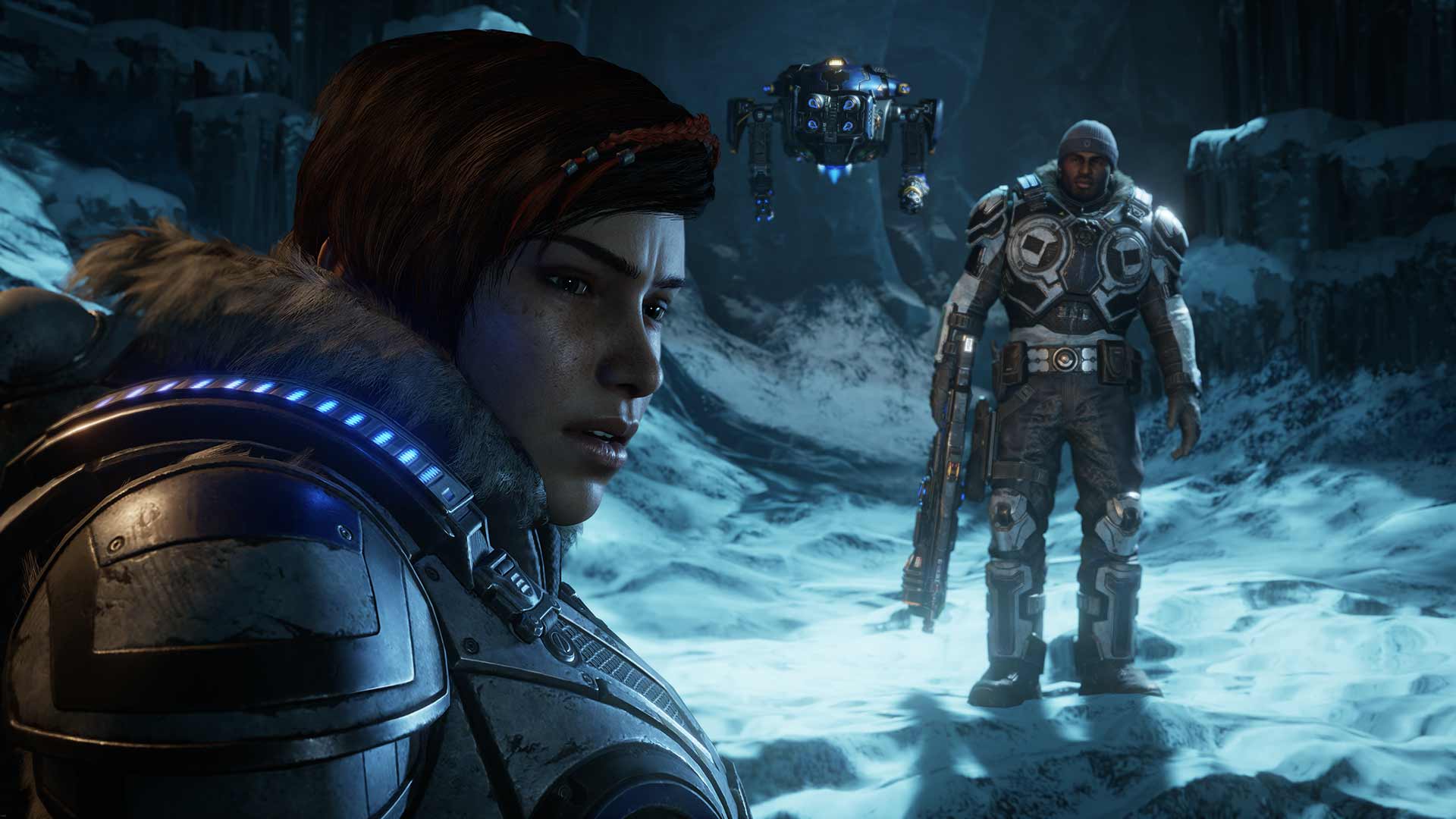
And Canada is a gaming market that has, historically, been very important to Xbox as well. [Gears] developer The Coalition is based in Vancouver and we acquired [We Happy Few developer] Compulsion Games not long ago — they’re based out of Montreal. So, Canada has been, and will continue to be, a gaming market that is on our radar that we’re eager to serve.
Gluckstein: Preview is our journey to learn. We will also extend into distant markets, [like] India, Japan, and multiple countries in Western Europe. We find that if we do it in this more staggered approach, we can test in very specific ways in different countries and ensure that we’re optimizing learning, which is what preview is all about.
Q: Canada is a geographically diverse country. Is there a concern that xCloud’s audience will be limited here and in other countries because of slow connections in rural areas? What are some of the ways that Microsoft will try to improve service in these less connected areas?
Choudhry: Within Microsoft right now, we’re going to continue the motion that we have from an Azure perspective, [which] is on its mission to become the world’s computer. And as they think about their data centre rollouts and connectivity to the population base, that’s an effort that we are completely riding on top of. The best possible thing we can do to give consumers a good experience is to deploy hardware as close to them as possible, and that’s where Azure’s 55 regions is really an asset, and of course that’s growing over time.
The next thing that we’re trying to do is have as small as possible a bandwidth requirement. I think of this golden triangle of video quality, bandwidth requirement and latency. The target that we’re trying to hit is below 10 megabits per second, and we want to operate well in any environment where consumers can have a good video streaming experience.
In terms of what’s happening in the broader industry, I’ll just mention Microsoft and the world’s general excitement around the deployment of 5G. That is a real technology that I think is going to bring equity of internet access to the world globally. And I’m incredibly excited about what it’s going to do for currently underserved areas in both Canada and the United States.
Q: xCloud has a wide variety of games, ranging from shooters (Gears 5, Halo: The Master Chief Collection), action (Devil May Cry 5), fighting (Soul Calibur VI) and even strategy (Civilization VI).
With that in mind, how do you decide which games to bring to xCloud and what does the process look like to actually bring them over to the cloud?
Gluckstein: There’s a couple of aspects to think about here.
We think about that [content] both in terms of our first-party studios, as well as the relationships that we have with all the third-party developers around the world. And so actually, we see much of our preview about working with our partners here, because it’s about what we’re learning together. So as we’ve gone to talk to partners about games they would like to feature in preview, it’s as much for them about what they would like to learn from preview by testing different types of games, as well as the delight we will bring to preview customers.
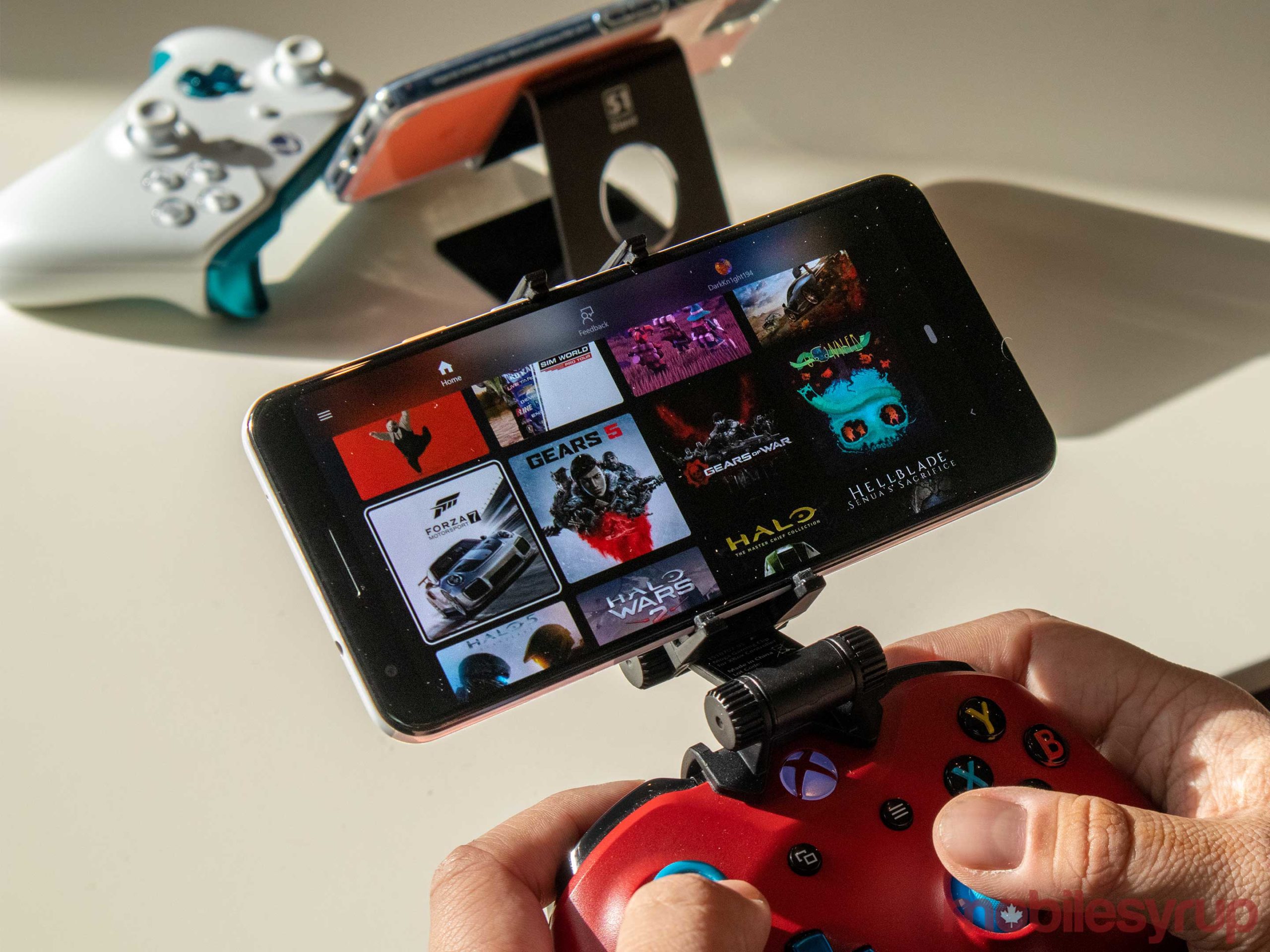
It’s [also] really important that we test a whole variety of different content and understand how it works differently from a console environment to a streaming environment. We’ve seen some fascinating results; for instance, we’ve had our first game that was played more on Project xCloud than it was played on console. We find that of the participants in preview, more than 50 percent of them are playing longer than they’ve played before. More than three-quarters of them are finding new games to play. And we think that says something about the accessibility of the form factor.
Choudhry: You also asked a little bit about the process of titles coming into the preview. The important thing for people to realize is that what we’ve done with Project xCloud is not about building a brand new platform. It’s an extension of the existing at-scale game development platform that we have today. And we built it in a way where we can take the exact same game packages and binaries that run on our Xbox ecosystem and load them onto our cloud servers, and they just run.
When Catherine and the team and I go and meet various game developers and publishers, we walk into the meeting, not with a bunch of slides and PowerPoints, but with phones and tablets. We hand those creators their games running on a phone and tablet.
And those have been some of my most electrifying moments in the program over the past year-and-a-half. Because I get to see creators enjoy their creative vision on a platform that they never designed or built it for. And they’re a little bit blown away by how we’ve done it. The number of times that CEOs will look around the room and ask their technical lead, “did you do this?” They’re oftentimes quite blown away that it’s their console game and they’re playing it on a new form factor.
Q: Outside of the gaming space, there are many streaming services from the likes of Netflix, Disney, Apple and HBO. Because of that, many people talk of there being a ‘Streaming War’ and getting fatigued because there’s so many services to keep up with. In gaming, we’re already seeing many companies jump in at once, like Xbox, PlayStation, Google, EA and Ubisoft.
What would you say to someone who might have a similar concern of oversaturation in the game streaming space? How will Microsoft continue to differentiate xCloud from all of these other up and coming services?
Choudhry: Yeah, subscription fatigue is a real thing. I’ll say those three necessary ingredients if you need the best gaming subscription out there: those three C’s being “content, community and cloud.” And I believe that Microsoft has got an incredible
amount of momentum, history, heritage, investment and capability across all three of those C’s. And I’m incredibly excited about Microsoft’s opportunity to combine them in the right way that can just delight gamers and fans in regions all around the world.
Q: As you mentioned, Microsoft’s larger gaming approach is about offering as many different options as possible across consoles, PC and mobile, with xCloud bridging the gap between these platforms.
Having said that, how do you see game streaming factoring into the next generation and beyond? When do you think we’ll get to a point where adoption of cloud gaming begins to rival that of console and PC ownership?
Choudhry: I think predicting the future in this industry is always difficult. I don’t think that transition point you’re describing is going to happen in the next year. But it’s likely to happen at some point.
I’m gonna phrase my answer as a parallel to activity you and I are already doing today. When I’m at home, I love watching Netflix on my 65-inch TV screen and when I’m away from my home, I’m happy to watch it on my laptop or even my phone. If you asked me 10 years ago if my children would watch an entire season of Stranger Things on their phones, I would say, “no way, you’re crazy.” But now that happens every single day.
So I don’t think the world in the future is going to be black and white. I think it’s going to continue to be a cornucopia of consumers who are enjoying gaming content across multiple devices and form factors and we’re going to unite that experience through our community and cloud in the best way that we can. And I also think we’re gonna see a large number of consumers that choose to enter this gaming ecosystem through streaming only.
Some of them will potentially graduate to playing on console and PC and some of them will stay streaming only. I think we spend less time strategizing over when these moments are going to happen and spending more time thinking about how we can present the best array of choices to consumers. How can we build an ecosystem that is cohesive across all device types, your game saves, your achievements, your social community, your friend network, your gaming history and heritage that flows evenly and intuitively between all of them? That’s really where our focus is.
Canadians can register for the Project xCloud preview here. xCloud is expected to officially launch sometime later this year.
For more on xCloud, check out our hands-on impressions here.
This interview has been edited for language and clarity.
MobileSyrup may earn a commission from purchases made via our links, which helps fund the journalism we provide free on our website. These links do not influence our editorial content. Support us here.

